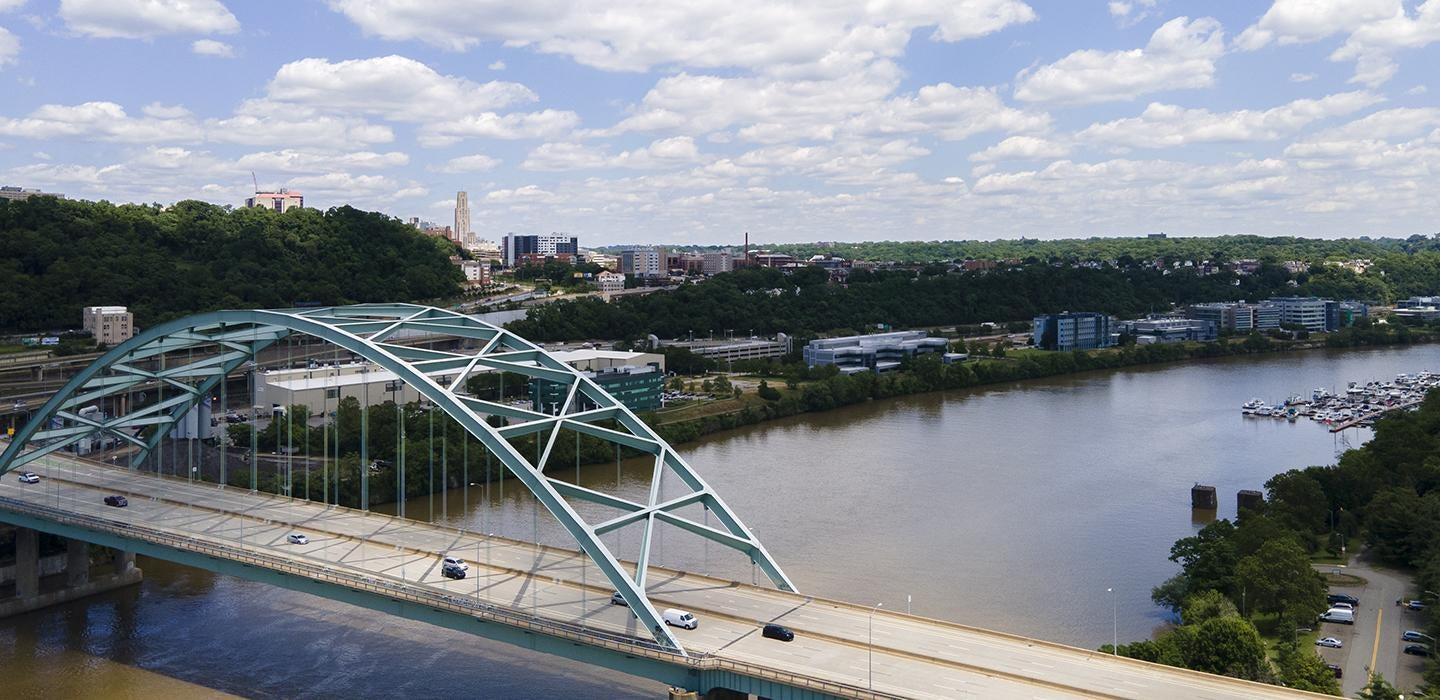
Subscribe to Pittwire Today
Get the most interesting and important stories from the University of Pittsburgh.The $1.2 trillion infrastructure bill signed Monday by President Joe Biden shouldn’t be viewed in a political sense, but rather on a broader scale, helping house by house rather than going through the House — but does that address America’s needs, asked a University of Pittsburgh civil engineering expert in infrastructure.
Put another way, infrastructure isn’t as simple as a bridge here, broadband there, a fix for utilities in between.
“Focusing on one aspect of infrastructure to the detriment of others is a poor solution,” said Kent Harries, professor in civil and environmental engineering, the Swanson School of Engineering. “I have little need for excellent roads if the power grid or data infrastructure fails, and electronic transactions disappear. Infrastructure is not the sum of its parts — it is the whole. Thus, a broad scope for infrastructure funding is important but results in resources spread thinly.”
That underscores his wonder if this bill as funded can meet America’s needs through the next decade.
He noted that, prior to Biden signing the current bill, the American Society of Civil Engineers’ Report Card on the U.S. infrastructure estimated a $2.6 trillion shortfall in funding by the end of the 2020s.
“The bill is limited to ‘traditional infrastructure’ and fails to address the ‘soft’ or social infrastructure needs of the nation,” Harries said. The “soft” side of infrastructure involves facets that are neither a civil engineer’s bailiwick nor addressed in this bill: “from education to health care; child and elder care, and so forth.”
To Harries, the bill focuses on the “hard infrastructure” rather than the interrelated and interdependent nature of infrastructure. There is funding for areas like transportation ($110 billion for roads, bridges and the like), broadband ($65 billion) and utilities (including $65 billion for the electric grid and $55 million for water), but will all the funded areas make a difference across the board and across the U.S.?
The Biden administration announced in March an American Jobs Plan that sought twice as much funding for a package and also hoped to stimulate jobs growth effected by the pandemic. After considerable political negotiation, this is the bill that resulted. If people expected a Roosevelt administration-like New Deal amid the Depression, “I see very little that is new in this bill,” Harries said.
“It is, sadly, a lowest-common-denominator bill in terms of scope,” he added. “This bill, while sorely needed, really just provides more of the same.”
An energy boost in Pennsylvania
The infrastructure bill may well inject investment to revitalize fossil-fuel-reliant communities hit hard by the decline of coal and the shale bust, according to an expert from the Graduate School of Public and International Affairs.
“Funding for the capping of oil and gas wells, whose numbers have proliferated during the shale bust, and the remediation of abandoned mines, would return scarred lands back to productive use,” said associate professor Shanti Gamper-Rabindran, author of “America’s Energy Gamble: People, Economy and Planet,” forthcoming from Cambridge University Press.
“What the bill also means is an investment in the electricity grid that can facilitate the growth of renewable energy. Such growth provides Pennsylvanians with the energy diversity needed to keep energy prices affordable.”
— Chuck Finder


